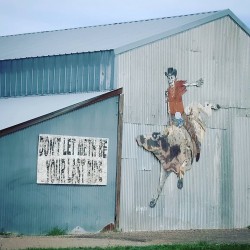Editorial | June 1st, 2016

By Tom Bixby
tom@hpr1.com
We’ve read Grace Lyden’s timely and thorough “9 things to know about Block 9, Fargo’s future high-rise,” in the Forum. One of the nine things is that there will be 20 condominiums on floors 13 to 17, purchase prices in the million dollar range.
She goes on: “While this is described in proposals as a ‘high-end condominium,’ Kilbourne Group says Block 9 will not gentrify Downtown.”
Lyden quotes from another document. “Kilbourne Group projects, including this one, do not displace existing affordable housing. Rather they add to the overall housing stock.”
This is disingenuous. Kilbourne Group is more than a developer. They are transforming Downtown. As they improve it, rents in properties they don’t own go up. Many Downtown businesses will no longer be viable; renters will have to move elsewhere.
Brad Stephenson’s expansive, browsable used bookshop was on Broadway; now it’s tucked away out by First Avenue and University. He moved because his rent went up. At the other end of NP Avenue is the F-M Community Bicycle Workshop, whose rent just went up and is now unaffordable. They’re still there, but for how long? Theatre B was priced out of their home on Main Avenue and hasn’t found another. We’re talking about valued members of the community, whose presence makes it worthwhile to live in Fargo.
University of Wisconsin Econ Professor Timothy Smeeding has explored the main statistical fracture in American society, between the upper 20% and the rest. They are prospering and the rest are stationary or have a deteriorating quality of life. There have always been an upper middle and upper class in our country; the difference now is that the divisions are self-perpetuating. We’ve lost our social mobility, perhaps the most precious part of our culture.
To be in the financial top 20% of American households, a person or family must have a minimum income of approximately $90,000. The average income of such a household
is around $250,000. But those are just numbers. The main difference is that twenty percenters are insulated, removed from struggles for health care, education, and remunerative work.
The Kilbourne Group is making Downtown safe for the 20% and remaking Downtown in their image, in where they choose to build and whom they choose to rent to.
We’re not saying that Burgum and Kilbourne are against us or consciously doing anything detrimental to us. It’s more accurate to say that we’re not part of their plans. But because they are involved in many projects, they have gone beyond development and are in effect social engineers.
Ten years from now the typical Downtown resident will be either a twenty percenter or an owner-occupier who bought before gentrification. It’s inevitable, happening in downtowns all over the country; and Burgum and Kilbourne are doing a very good job of it. The Loretta Building is beautiful, especially in the back, facing the alley.
Most of us will have to move out. We won’t mind. Our good old funky Downtown, with its gap-toothed skyline, will be gone.
Some of us will move to the next urban frontier, west and west-northwest of Downtown,
beyond the Kilbourne Group’s last sentinel, Woodrow Wilson High School.
We mean out there where the Christian Sports Coalition was not allowed to open a group home for sex offenders; where old houses are interspersed with offices, depots, and warehouses, some of them derelict. It was zoned mixed residential and commercial in 1923, luckily for us.
These are a few of our favorite things: disused railroad spur lines; the Fire Department’s dark and forbidding practice house; the boat repair shop’s dense grove of trees, brutally cut back several years ago. A white church that looks like it should be out on the prairie. Several carefully tended gardens on otherwise nondescript streets, made all the prettier by contrast. Orland and Jean in their tiny westernmost house, surrounded by industrial buildings. Tall grass growing where nobody goes.
Funky it is and full of short cuts, much of it old enough and with sufficient patina for comfort. There we can hide out and live happily for a generation, until the next Burgum and Kilbourne come to evict us.
February 21st 2025
January 17th 2025
December 19th 2024
November 21st 2024
October 16th 2024
_(1)__293px-wide.jpg)
__293px-wide.jpg)
__293px-wide.jpg)




By Josette Ciceronunapologeticallyanxiousme@gmail.com What does it mean to truly live in a community —or should I say, among community? It’s a question I have been wrestling with since I moved to Fargo-Moorhead in February 2022.…